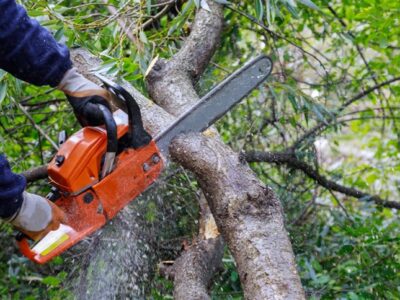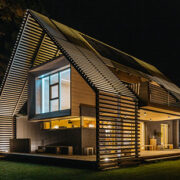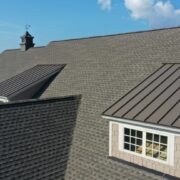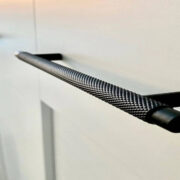The majority of property owners prefer wrought iron fences to enclose their yards. One of these factors is the intrinsic resistance of fencing. The owner is not concerned that the 100-year fence will need to be repaired anytime soon because of its strength and resistance to bending, strain, and denting.
Despite the system’s great degree of resilience, accidents are still conceivable. With time, your wrought iron fence will undoubtedly suffer dents and rust. If this occurs to you, be sure the company that installed your fence has the means to make the necessary repairs in a timely manner. You may want to learn more about the kind and severity of possible harm. In the following paragraphs, we will elaborate on this topic and discuss the history of the wrought iron fence.
the first wrought-iron examples
The invention of blast furnaces in the fourteenth century enabled the production of the first wrought iron fence. These railings were really simple. The rails were used to make the enclosed staircase or hallway a more secure environment. Church architecture and ornamentation may be seen in these early architectural styles as well. Even after steel had been available for a time, wrought iron remained popular until the late nineteenth century. This way of the operation took over two centuries to create. Cast iron railings were not frequently utilized until the later part of the 18th century when new production processes made them possible.
Since they learned how quickly and easily cast iron could be molded into traditional shapes, the Adams brothers were important in its widespread adoption. They understood that metal could be simply and swiftly formed into conventional forms. Before approximately the year 1850, homeowners seldom employed cast iron as an outdoor aesthetic component in their houses. Iron was very routinely utilized to construct railings, parapets, and balustrades for low stone boundary walls. It was also utilized as a finishing touch on the roofs, porches, and bay windows of select middle-class homes. As cast iron’s popularity rose throughout the Victorian period, it was commonly employed in the construction of Victorian gates, railings, panels, and the decorative components that such buildings included.
Constructing mansions that were extraordinary not just in size and design but also in their aesthetic appeal became the norm during the Victorian period. In keeping with the aesthetic of this design, the mosaic tile was commonly utilized to enhance garden elements like gates, fences, and walks. This was done so that we could boast about our wealth and accomplishment.
One kind of iron is cast iron, while another is wrought iron. Victorian-era gates and railings may be seen on a large number of British terraced houses, particularly older ones. The primary aim of building these gates and railings was to improve safety and act as a boundary between private property and public highways.
Whether used as decoration, fences, railings, or terrace gates, traditional ironwork is often built to reflect the architectural architecture of the property on which it is employed. This is true regardless of the aim of the ironwork. The Victorian style was produced by “gracious period” craftspeople who took their time to create works of art that would survive for many generations. As a result, cast iron gates and railings with intricate patterns were in great demand at the time. By the late 1800s, even the most luxurious Victorian estates had access to catalogs packed with mass-produced cast iron fences and gates. They might be walls or gates.
The Influence of Weather Conditions
Even though your wrought iron fence was meant to withstand all types of weather, it might be harmed by it. The most serious danger to the aesthetic value of your fence is a situation that all too often occurs. Corrosion on your fence may be caused by any sort of precipitation, including snow and ice. This might happen gradually. Strong wind speeds are another potential weather hazard that might jeopardize the barrier’s protection.
There are certain things that you simply can’t stop occurring, no matter how hard you try. You may slow the rusting process by examining your fence on a regular basis, particularly after storms, and repairing any damage you see.
Corrosion May Cause Destruction
Iron and other metal fences, like other metals, are especially prone to corrosion. This is a common source of annoyance for homeowners who have previously only had vinyl or wood fences on their properties. Corrosion-related issues must be addressed and resolved as soon as possible.
You may be able to prolong the time that your fence serves its intended function by frequently inspecting it for early signs of rust. Use sandpaper and a wire brush to eliminate any faults that may be present in the item in question. After rust removal, at least one or two coats of rust-resistant paint should be applied. While painting or sanding, wearing a mask might help you avoid inhaling potentially dangerous particles.
If you see any significant rust areas, contact the company that installed your fence and ask if they can send someone out to fix it. If you see rust areas on your fence,
If the issues continue, you should contact the installer to see whether a repair crew can be sent.
The Dangers of Loading Your Fencing
If you wish to hang or lean anything against your fence, you must use extreme care. Because of the way it is constructed, the device cannot be utilized to transfer a significant amount of weight. Since the fencepost must bear so much weight, it may eventually bend or even fracture as a result of the strain. Despite the fact that no wrought iron fence can be created to support heavier loads for a long period of time, this is especially true when dealing with thinner wrought iron fence posts.
This decision should not be taken until you are certain that adding anything to your fence will not make it substantially heavier than it is now. Christmas lights hung between fence posts, for example, may be preferable to gigantic poinsettia wreaths. If you are unsure if your fence can safely support a given amount of weight, consult with the experienced professional who installed it.
Accidents Happen
If your property is close to a busy road or a bend in the road, installing high visibility lights or reflector sticks next to your fence may help reduce the likelihood of a traffic accident occurring there. If a vehicle strikes your fence and causes damage, you should contact your homeowner’s insurance carrier to see if you will be liable for the repairs.
If anything huge, such as a tree limb or a vehicle, smashes into your fence, it is quite likely that it will sustain significant damage. If you see anything that might jeopardize the fence’s integrity, please contact the company that built it straight away.
Conclusion
Regular maintenance and monitoring of wrought iron fences are vital for fixing any possible issues. You want to ensure that your fence lasts as long as possible in excellent shape since you put a significant amount of money into it.
Be sure you ask the fence installation firm what they recommend doing to maintain the fence in excellent condition. If you have purchased a home with an existing fence, contact a reputable company like Butte Fence to discuss care.
The wrought iron fence that we provide may be designed in a number of ways. If you are interested in making a purchase or have any questions, please go here to learn more.









Comments